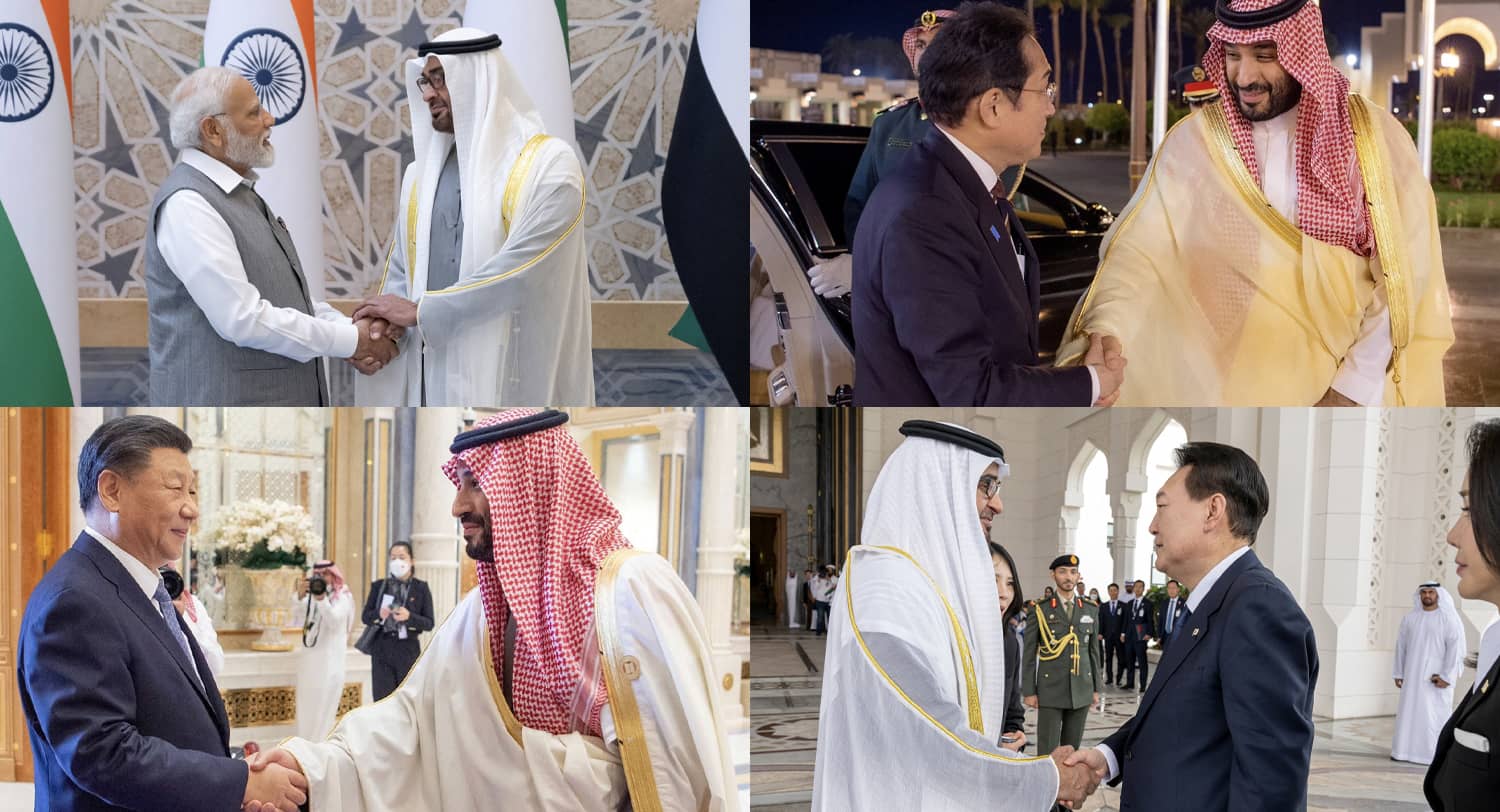Japanese Prime Minister Kishida, Korean President Yoon Suk Yeol and Indian Prime Minister Modi each made a trip recently to Arab countries of the Gulf. In July, Kishida visited Saudi Arabia, the United Arab Emirates (UAE), and Qatar while Modi was in the UAE. Yoon visited the UAE in January. These three trips received far less international media coverage than Chinese President Xi Jinping’s visit to Saudi Arabia last December but they are important indicators of changing dynamics in Asia-Gulf relations.
For Japan, India and South Korea, today’s global competition between China and America is stimulating a renewed focus on each of their bilateral relationships in the Gulf. They depend on the Gulf states for their energy, conduct substantial trade and make investments in the Gulf. In the case of India, millions of citizens live and work there.
Their close relations with Washington have allowed them to develop substantial business interests in the region under the US security umbrella, meaning they did not have to play a security role equal to their economic interests. However, as the US shifts its attention to meeting the China challenge in the Indo-Pacific, each of these three Asian powers may come to see the Gulf as a region of increasing bilateral relevance beyond the oil trade.
From the Gulf perspective, Asian countries are often their top customers, establishing an economic interdependence that has grown to include investment, contracting, construction, and labor flows.
China is naturally a big part of this story. It became the world’s largest energy importer in 2013 and between 40-50 percent of its imported crude oil comes from the Gulf. In 2013, China’s import of Gulf crude oil trade was valued at $61.3 billion. Other Asian powers were not far behind. Also in 2013, Gulf oil exports to Japan were valued at $38 billion and represented 90 percent of its oil imports, India imported $25 billion in Gulf oil (52 percent of its crude imports) and Korea imported $25 billion of Gulf oil, representing over 80 percent of Korea’s crude imports, according to data from Chatham House’s Resource trade.earth.
The geopolitical consequences are important. Japan, India and Korea each has a different relationship with Beijing, while sharing concerns with China’s political and economic practices and its vision for international order. The three have much to offer the Gulf countries in their developmental agendas. And all are aligned with Washington (though India less so). As great power competition comes to the Gulf, inter-Asian rivalries will be an important new dynamic for the region.
Korean President Yoon’s trip to the UAE in January involved a delegation of nearly 100 Korean companies which signed agreements worth $6.1 billion – across nuclear power, green energy, and defense sectors. The UAE committed to investing $30 billion in Korea’s defense sector, as well as nuclear, hydrogen and solar energy. This followed a visit in January 2022 by his predecessor, President Moon Jae-In, during which the Emirates bought $3.5 billion worth of Cheongung II mid-range surface-to-air missiles before traveling to Saudi Arabia, where it was announced that LG, the Korean electronics giant, would set up a regional headquarters. At both stops work was done on the proposed Korea-GCC free trade agreement.
Japanese Prime Minister Kishida described his first trip to the region as a “global green journey” to help the Gulf countries in their energy transitions. He pointed out that “we are shifting away from the existing relationship of an oil importer and exporter and will deepen a new global partnership for the decarbonization era,” underscoring Japan’s value as a partner rather than just a customer. He also traveled with a large business delegation, signing deals at a UAE-Japan Business Forum held to coincide with the visit. Beyond energy, agreements were signed to increase trade and investment in space, artificial intelligence, and advanced technology.
The trip of India’s Modi was his fifth to the UAE since taking office. Last year they signed a Comprehensive Economic Partnership Agreement, aiming to increase their trade from $72 billion in 2022 to over $100 billion by 2030. The UAE hosts an Indian diaspora of over 3.3 million and plans to inaugurate the country’s first Hindu temple in 2024, in the context of a broader effort to demonstrate religious tolerance.
None of this is to suggest that these three countries are positioning themselves as leading extra-regional powers in the Gulf. However, they each have significant economic interests in the Gulf and, as the recent visits indicate, they would like to play larger roles beyond energy and trade. That they are US allies and partners with shared concerns about China’s approach to international order indicates that there is room for cooperation among them in coordinating their Gulf policies.
One example of this potential is the I2U2 (India, Israel, UAE and US) initiative, which provides a glimpse of what greater Asian participation in Middle Eastern affairs could look like.

